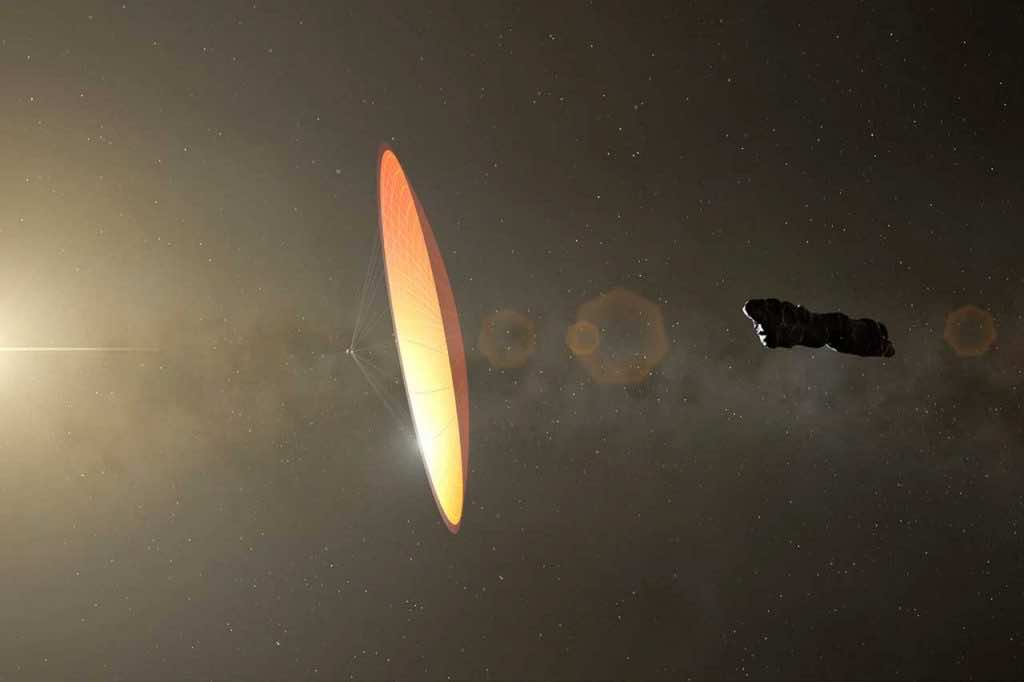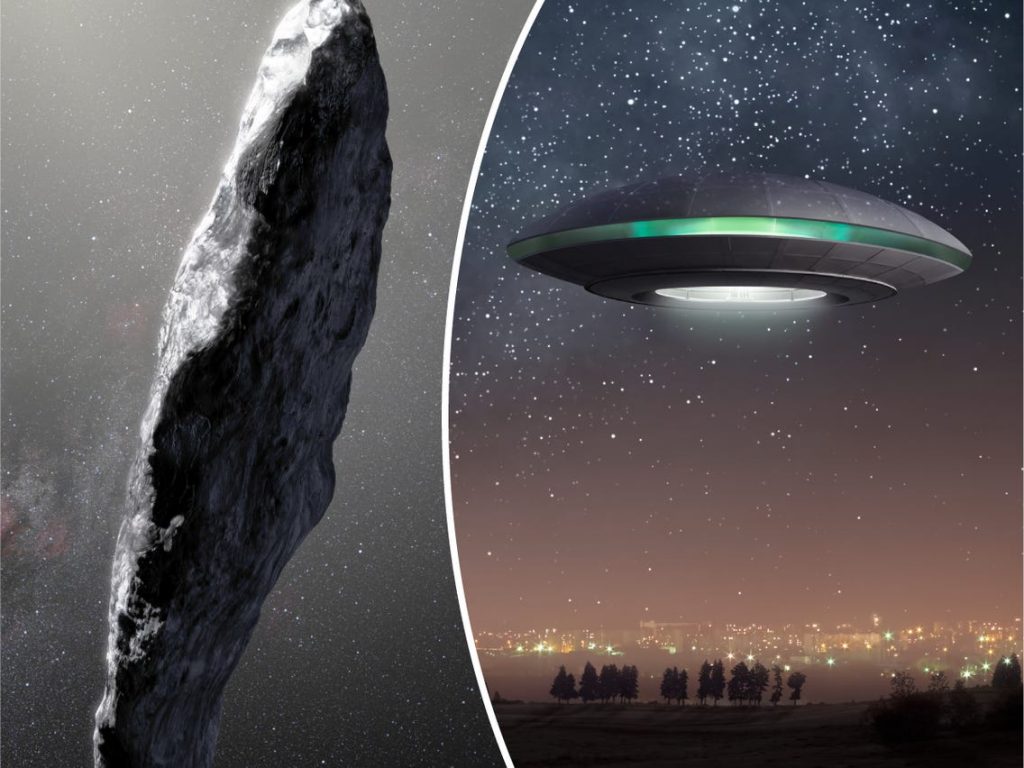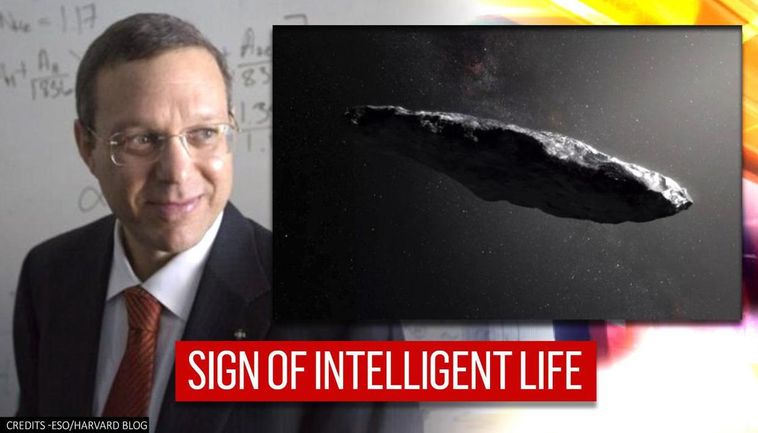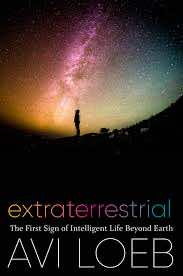Saying it is not comets and asteroids, a Harvard Professor said, ‘Oumuamua is alien technology’.
The search for intelligent life outside of Earth is a timeless one and is expressed and wished for in countless books and films. Most fictional depictions of close contacts involve a great connection — a meeting of educated minds and cultures, with a serene exchange of technological prowess.
Scientific ideas like the Drake Equation attempt to formalize more comprehensive theoretical parameters of creative life beyond Earth — have still given a firm figure to the chance of life in our galaxy. If intelligent aliens are a thing, they’ve yet to leave a mark.
Now as per the latest information, one famous scientist says they just did.
When the mysterious object now known as ‘Oumuamua rushed through our solar system in 2017, that might have been our initial official encounter with alien technology. This was highlighted by astrophysicist and Harvard Professor Avi Loeb in his book, named “Extraterrestrial: The First Sign of Intelligent Life.”

Alien Technology Enters Our Solar System
In his forthcoming book, Professor Loeb makes a compelling case for why the object called ‘Oumuamua — an elongated thing, something more like a shaft that flew speedily through our solar system in 2017 — was not only a space rock. ‘Oumuamua, he said is, “probably a piece of defunct alien technology.”
The object from the outside world shot in from the direction of “Star Vega,” situated approximately twenty-five light-years away. The mysterious object flew through our solar system on 6th September 2017.
Loeb wrote, “It intercepted the orbital plane, within which all of the planets in our solar system revolve around the sun, on September 6, 2017. But the object’s extreme hyperbolic trajectory guaranteed it would only visit, not stay.”

Show Of Constant Acceleration
After passing the perihelion, the nearest position to the Sun of ‘Oumuamua’s trajectory, “It began to exit the solar system; its speed far away — relative to our star, it was moving at about 94,800 km per hour which ensured its escape from the Sun’s gravity,” wrote Loeb in his book.
The book states, “It passed through Venus’ orbital distance from the sun around September 29 and through Earth’s around October 7, moving swiftly toward the constellation Pegasus and the blackness beyond.”
The object showed a small but constant acceleration for which the sun’s gravitation could not account.
Scientists Amazed With Its Speed
Comets do alike as they release gases — which blend into their signature tails. But the book states, “Oumuamua didn’t have one, nor did telescopes we’d centered on the strange object find any signs of by-products typically linked to outgassing, like dust or water vapor.”
Astronomers dug in deep in the matter and excluded one theory after another, trying to make some sense of Oumuamua’s magnificent speed. They were certain that its speed didn’t come from a collision with another object; neither gathered such speed from the solar wind.
A research group said that the best explanation could be that it is nothing but a miniature comet. They believed that its tail wasn’t detected due to the forming of unusual chemical composition. Another group said that it contained frozen hydrogen, making it a modified mini-comet hypothesis.
Harvard Professor Says Its Brightness Is Key To Its Origin
However, an interesting theory came from Professor Loeb, which states, “Oumuamua wasn’t the kind of interstellar object we expected. Rather, it is an artifact of an alien civilization. Long before we knew of its existence, the object was traveling toward us from the direction of Vega, a star just 25 light-years away.”
However, ground- and space-based investigations following the object’s outer trajectory identified sunlight reflecting off the surface of ‘Oumuamua.
“For astrophysicists, an object’s changing brightness provides invaluable clues to its shape,” states Loeb. “In the case of ‘Oumuamua, the object’s brightness varied tenfold every eight hours, which we deduced to be the amount of time that it took to complete one full rotation.”

Object Was Believed An Artifact Of Alien Civilization
“This dramatic variability in its brightness told us ‘Oumuamua’s shape was extreme, or at least five to ten times longer than it was wide,” Loeb states. It seemed evidence pointed to a relatively small, cigar-shaped object.”
“This is definitely an unusual object,” told the narrator of a NASA video, The New Yorker states. “And, unfortunately, no more new observations of ‘Oumuamua are possible because it’s already too dim and far away.”
Excluding the possibility of it being a comet or an asteroid, professor Loeb said that only one reasoning remains: the mysterious space object is nothing else but an advanced technological machine from an alien civilization.
‘Astonishing Claims Require Sound Evidence’
“Our civilization has sent five man-made objects into interstellar space: Voyager 1 and Voyager 2, Pioneer 10 and Pioneer 11, and New Horizons,” states Loeb. “This fact alone is suggestive of our unlimited potential to venture far out. So too is the behavior of our more distant ancestors.”
“And if other civilizations developed out there among the stars, wouldn’t they have felt that same urge to explore, to venture past familiar horizons in search of the new? Judging by human behavior, that would not be surprising in the least,” summed up Loeb in his upcoming book.

‘New Prospects of Exploration’ Derived By Alien Origin Theory
The best evidence Loeb cites for his ‘Oumuamua theory is the absence of convincing alternative explanations. “It is not obvious to me why extraordinary claims require extraordinary evidence,” wrote Loeb, flipping the script on Sagan: “Extraordinary conservatism keeps us extraordinarily ignorant.”
To Loeb, as far as the chance exists that ‘Oumuamua is an alien probe, not considering this possibility could make fools of us all. “If we acknowledge that ‘Oumuamua is plausible of extraterrestrial-technology origin,” writes Loeb, “whole new vistas of exploration for evidence and discovery open before us.”
For standing by his beliefs, Loeb risks serious ridicule. On historical grounds, the odds are stacked against his theory. Yet considering the statistical probability of life beyond our earth against the stark contrast of lacking evidence. It is known as the Fermi Paradox and makes it hard to resist the interesting possibilities that could uncover if we knew the technology from an alien civilization actually entered our solar system.


